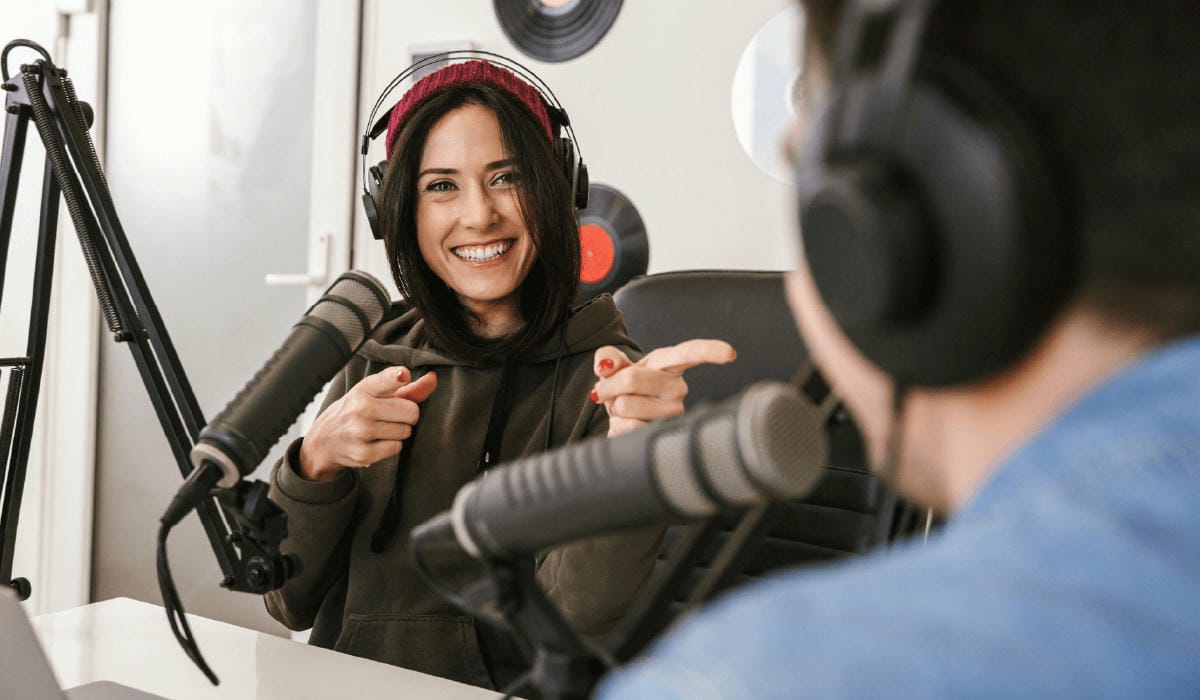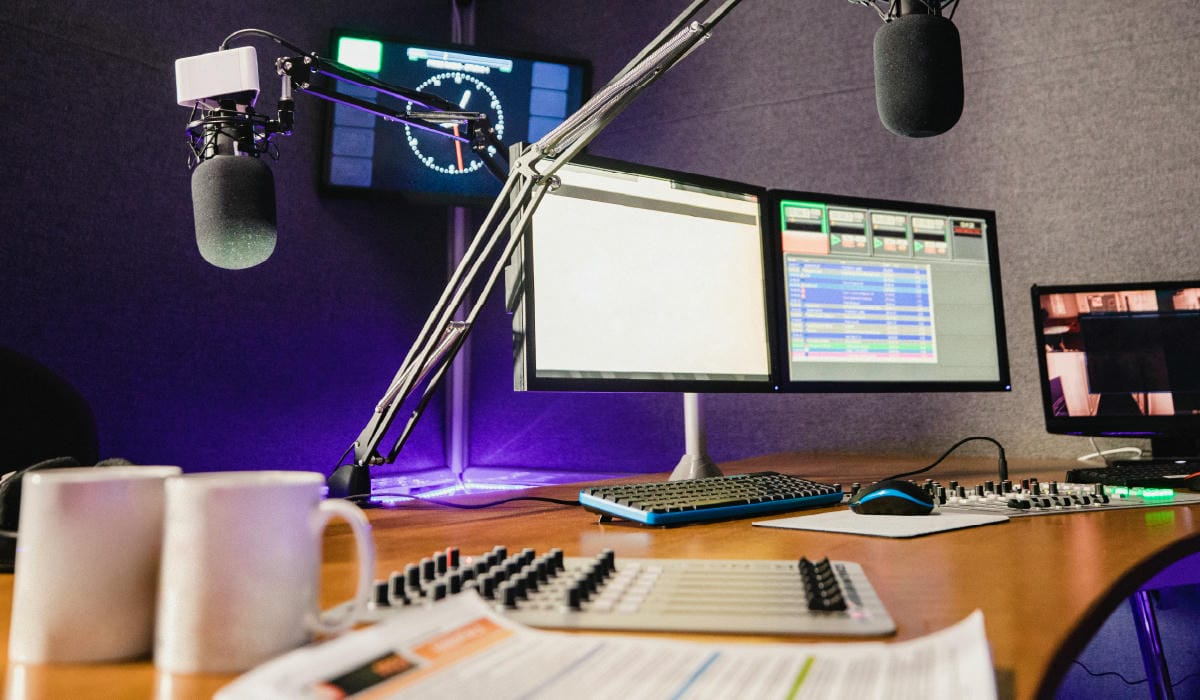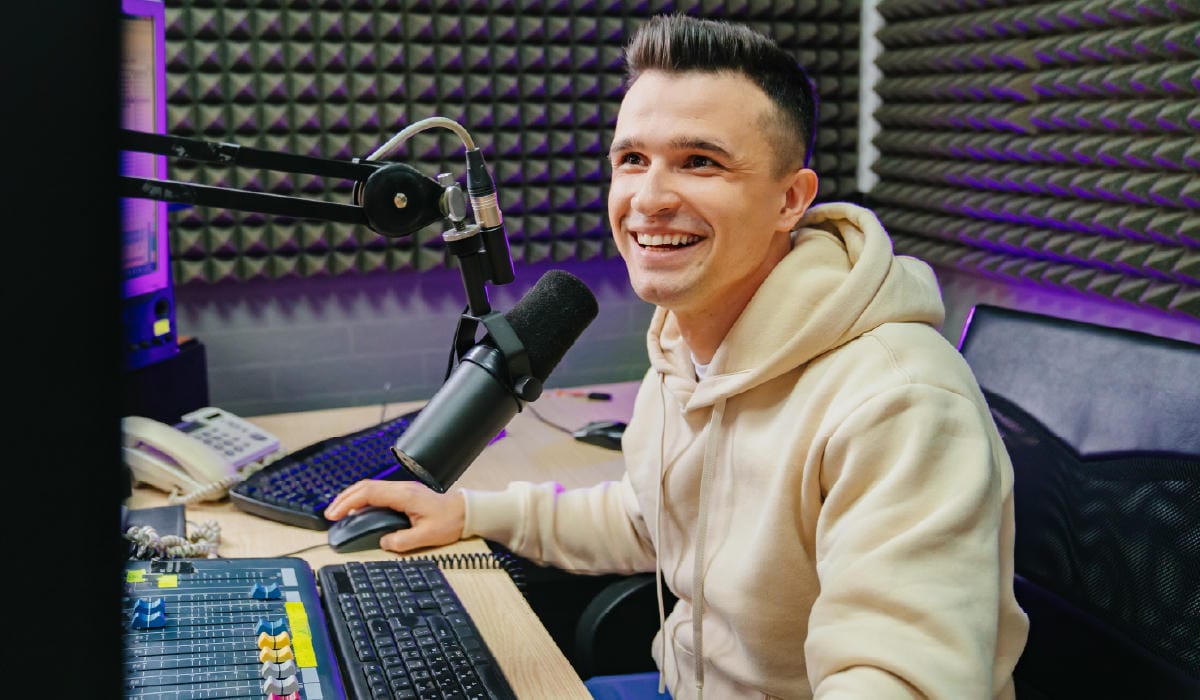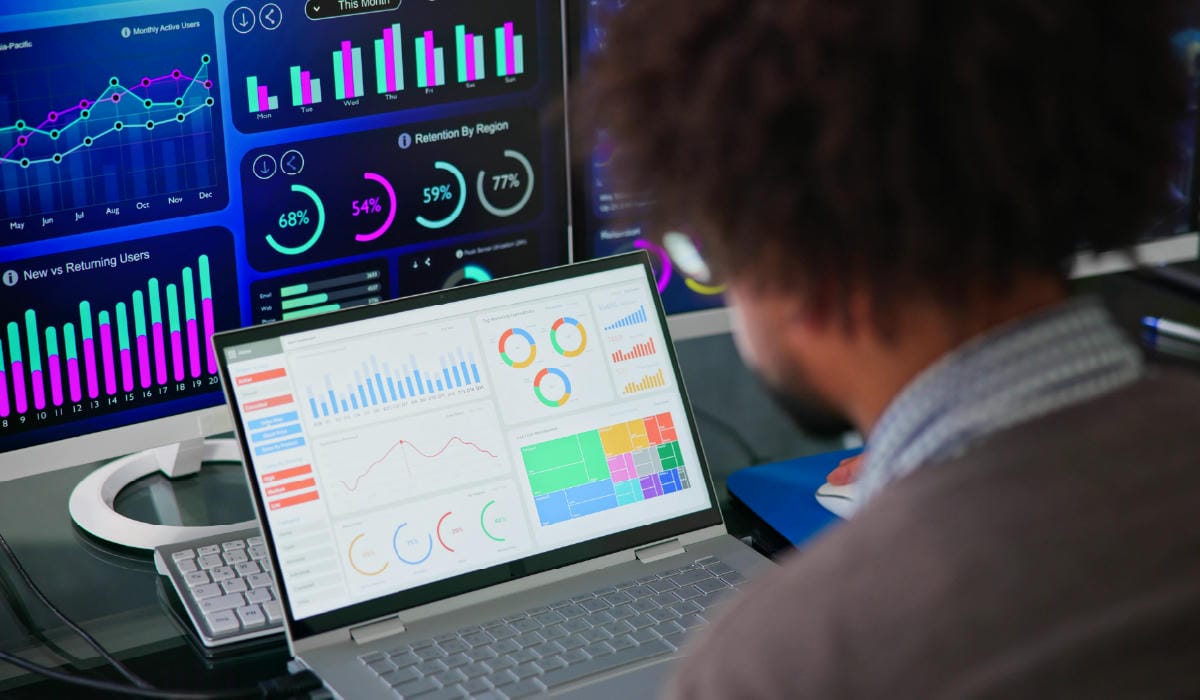
Radio Programming: 8 Tactics To Attract and Retain Listeners
Well-planned radio programming is essential to any station's success. It's how you attract listeners, keep them engaged, and give your station a clear identity. In Chapter 1, we covered how to start a radio station, and in Chapter 2, we explored the equipment and software needed to set up your studio.
This final chapter dives into what radio programming really means, why it matters, and eight practical tactics you can use to build a schedule that keeps your audience hooked and coming back for more.
Table of Contents
Chapter 1
How to Start a Radio Station: Step-by-Step Guide
Chapter 2
Software and Equipment for Broadcasting Your Radio Station: Here's What You Need
Chapter 3
Radio Programming: Seven Keys to Captivating Your Audience
What Is Radio Programming?
Why Great Programming Is the Heart of a Successful Station
Radio Programmer Tactics and Strategy: 8 Keys to Audience Engagement
1. Understand Your Target Listeners
2. Choose a Strong Radio Format
3. Secure the Required Licensing
4. Craft a Consistent and Engaging Programming Schedule
5. Refine Your Station's On-Air Sound
6. Recruit a Strong On-Air Team (Or Hone Your Skills)
7. Engage Your Listeners
8. Monitor and Analyze Your Performance
Make Programming Your Competitive Edge
Table of Contents
Chapter 1
How to Start a Radio Station: Step-by-Step Guide
Chapter 2
Software and Equipment for Broadcasting Your Radio Station: Here's What You Need
Chapter 3
Radio Programming: Seven Keys to Captivating Your Audience
What Is Radio Programming?
Why Great Programming Is the Heart of a Successful Station
Radio Programmer Tactics and Strategy: 8 Keys to Audience Engagement
1. Understand Your Target Listeners
2. Choose a Strong Radio Format
3. Secure the Required Licensing
4. Craft a Consistent and Engaging Programming Schedule
5. Refine Your Station's On-Air Sound
6. Recruit a Strong On-Air Team (Or Hone Your Skills)
7. Engage Your Listeners
8. Monitor and Analyze Your Performance
Make Programming Your Competitive Edge
What Is Radio Programming?
Radio programming is the process of planning, selecting, and scheduling the content that airs on your station. It covers every element of what listeners hear – from music tracks and talk shows to news segments, ads, and station IDs.
At its core, programming defines your station's structure and flow. This includes decisions like:
What genres or formats you'll feature
When specific shows or content blocks will air
How live and pre-recorded segments are balanced
Which syndicated or specialty programs to include
What kind of ads or sponsorships are played, and when
Programming also involves choosing the timing and rotation of content to create a consistent listening experience. That might mean:
Scheduling a morning talk show followed by a music block
Playing specific types of content at certain times of day
Using automation software to manage off-hours playback
A strong programming plan ensures that everything on your station is intentional, well-organized, and aligned with your goals. Whether you're managing a 24/7 online stream or a fixed broadcast schedule, programming is the foundation of your station's daily output.
Why Great Programming Is the Heart of a Successful Station
Your branding might get someone to tune in once, but your programming is what makes them stay.
Here's why strong programming matters more than ever:
It gives your station identity: Whether you're known for chill evening vibes, a bold morning show, or deep-dive interviews, consistent programming shapes how your audience sees – and hears – you.
It builds loyal listening routines: Consistent segments, familiar voices, and smart scheduling help listeners know when to tune in, turning casual listeners into regulars who make your station part of their daily habits.
It cuts through the noise: With so many audio options out there, generic just doesn't cut it. Focused, intentional programming helps you compete with streaming, podcasts, and short-form content.
It encourages discovery: Thoughtful scheduling nudges audiences to stay tuned longer and explore shows they might not have tried otherwise.
It keeps the sound fresh: Careful playlist planning avoids song clashes and repetition, making every listen a fresh experience.
The bottom line: Effective programming fuels connection, drives growth, and sets your station apart. The following tactics will help you craft a schedule that truly resonates.
Radio Programmer Tactics and Strategy: 8 Keys to Audience Engagement

1. Understand Your Target Listeners
Audience research lays the foundation for effective radio programming. You can't serve listeners you don't understand. Start by creating detailed listener personas that go beyond basic demographics to capture the full profile of your ideal audience members. Consider key factors such as:
Age and Generation: Baby Boomers tend to prefer news/talk and classic hits, while Gen Z favors hip-hop, pop, and podcast-style content.
Location: Urban versus rural preferences influence music choices and news coverage.
Lifestyle Factors: Work schedules, commute times, and weekend activities shape listening habits.
Income Level: This affects advertising partnerships and sponsored content opportunities.
Interests and Values: From sports enthusiasm to political leanings, these guide content preferences.
Create 3 to 5 detailed personas representing your core audience segments. For example:
“Morning Mike” — A 42-year-old suburban dad who listens during his 45-minute commute and wants traffic updates, classic rock, and lighthearted morning banter.
“Workout Whitney” — A 28-year-old fitness enthusiast who streams your station at the gym, craving high-energy pop hits and motivational content.
To accurately build these personas, leverage a variety of audience research tools and techniques such as:
Social media analytics to track follower demographics and engagement patterns.
Call-in data to understand when listeners call and what topics they discuss.
Streaming analytics to monitor listening times, session lengths, and geographic location.
Regular listener surveys that reveal preferences and pain points.
Focus groups for deep-dive conversations with your target audience.
Understanding your audience also supports monetization efforts. When you know what your listeners buy, you can attract relevant advertisers. Platforms like Live365 offer tools that automatically match your audience with suitable advertisers through ad exchanges and a Private Marketplace (PMP), enabling buyers to compete for your inventory. This maximizes your revenue potential while keeping ads relevant and engaging for your listeners.

2. Choose a Strong Radio Format
Organizing your programming into clear format categories helps keep your schedule fresh and your station engaging. Mixing different types of content throughout the day prevents shows from blending together and keeps listeners interested.
Consider these common radio formats to structure your station's programming:
News/Talk Radio: Focuses on current events, news updates, and in-depth discussions that engage listeners with timely topics.
Music Radio: Divided into genres like pop, rock, country, or R&B, allowing you to cater to diverse musical tastes throughout the day.
Sports Radio: Features live game coverage, commentary, and sports talk to attract passionate fans.
Public and Community Radio: Offers nonprofit or local-interest programming that serves community needs and public service missions.
Faith-Based and Educational Programming: Includes religious content and educational shows, often with a focused mission or target audience.
Niche or Specialty Formats: Tailored to specific listener interests, these formats might include jazz, electronic, reggae, or other specialized genres.
Whichever format you choose, success depends on selecting and organizing programming that:
Defines your station's identity and appeals directly to your target audience’s interests and preferences.
Caters to distinct listener groups through formats like news/talk, genre-specific music (pop, rock, country, R&B), sports coverage, public/community radio, faith-based and educational shows, or niche specialty content.
Supports multi-format networks if your audience is diverse or your vision spans multiple genres, allowing you to run separate streams under one brand. Platforms like Live365 make managing these streams simple and centralized.
Leverages broadcasting tools that help you efficiently implement and evolve your chosen format, setting the foundation for strong listener engagement.
Choosing the right format lays the groundwork for your station's character and guides future content planning, scheduling, and audio production strategies.

3. Secure the Required Licensing
If your station features copyrighted content – such as music or syndicated broadcasts – you'll need the proper licenses in place to avoid legal and financial penalties. For music, this typically means securing performance rights from major licensing organizations.
To simplify this process, many broadcasters use platforms that handle licensing on your behalf. Live365, for example, includes coverage in the U.S., Canada, Mexico, and the U.K. through partnerships with leading performance rights organizations, including:
ASCAP (American Society of Composers, Authors, and Publishers)
BMI (Broadcast Music, Inc.)
SESAC (formerly Society of European Stage Authors and Composers)
GMR (Global Music Rights)
Word Collections
AllTrack
SoundExchange
SOCAN (Society of Composers, Authors, and Music Publishers of Canada)
Re:Sound
EMMAC/SACM
SOMEXFON
PPL (Phonographic Performance Limited)
PRS for Music (Performing Right Society)
Letting Live365 handle licensing for you ensures compliance, saves valuable time, and allows you to focus on creating great content.

4. Craft a Consistent and Engaging Programming Schedule
A well-structured schedule is essential for turning casual listeners into loyal fans. By using dayparting – dividing your broadcast day into segments based on your audience's routines – you can tailor content to when listeners are most receptive. Consider key time blocks such as:
Morning Commutes (6 AM – 10 AM): High-energy shows, popular music, news, weather updates, and quick segments to kickstart the day.
Midday (10 AM – 3 PM): Longer music sets, relaxed conversation, or in-depth interviews.
Afternoon Drive (3 PM – 7 PM): Upbeat hits and traffic updates to keep commuters engaged.
Evening (7 PM – 12 AM): Specialty programming like niche music genres or talk shows catering to dedicated fans.
Mixing different content types throughout the day keeps your station dynamic and prevents segments from blending into one another. Reserving genre-specific or less popular shows for off-peak hours helps maintain broad appeal during prime listening times.
Scheduling tools are essential for maintaining consistent flow, smooth transitions between segments, and balancing live with automated content. Live365 makes this easier by:
Providing an Events schedule that keeps your programming organized and flowing smoothly
Enabling seamless transitions between live broadcasts and automated playlists
Allowing you to build custom Playlists for hands-on control
Offering ClockWheels that automatically generate content on a set schedule
With these tools, you can maintain variety effortlessly and keep your station running nonstop, delivering a polished and engaging listening experience around the clock.
5. Refine Your Station's On-Air Sound
Your station's sound is what makes your programming memorable and distinctive. Radio imaging – the use of sound effects and audio branding elements – helps establish your station’s unique identity. Common imaging elements include:
Voiceovers: Professional voice recordings that introduce segments or shows
Liners: Short voice clips placed between content to keep the flow smooth
Jingles: Catchy songs or musical phrases that identify your station or hosts
Intros: Standardized segment introductions that set listener expectations
Music beds: Background instrumentals supporting speech segments
Stingers: Quick sound effects to emphasize conversation points
Sweepers: Electronic sounds that transition between songs or segments
Bumpers: Announcements between programming and commercial breaks
Planning your content in advance not only ensures consistency but also allows you to enhance your audio quality. Audio processing tools are essential for:
Balancing volume levels to deliver a polished, professional sound
Enhancing clarity so speech and music stand out clearly
Reducing background noise and smoothing out technical inconsistencies
These improvements help maintain a high-quality listening experience that keeps your audience engaged and helps your station stand out in a crowded market.
Platforms like Live365 make it easy to integrate your programming schedule with audio enhancements. Its station management tools enable smooth transitions between content, ensuring your station consistently delivers high-quality sound, no matter when or how listeners tune in.

6. Recruit a Strong On-Air Team (Or Hone Your Skills)
Live segments rely heavily on engaging on-air talent, supported by a skilled technical crew. To set your live broadcasts up for success:
Invest in recruiting, training, and motivating your on-air staff.
Seek experienced broadcasters or vibrant, up-and-coming personalities.
If you're running the station solo, focus on developing your own on-air skills.
Technology can also support your team. Automated playout software keeps programming running smoothly, while voice-tracking – prerecording DJ segments – can give the feel of a live presence in the studio.

7. Engage Your Listeners
Keeping your audience engaged is key to successful radio programming. Beyond delivering great content, actively involving your listeners helps build loyalty and a strong community around your station.
Incorporate live, interactive elements to encourage participation. Popular methods include phone-ins, interviews, contests, and games. These not only make your broadcasts more dynamic but also create a sense of connection and involvement among your audience.
Leverage social media to extend engagement beyond the airwaves. Use platforms like Facebook, Instagram, X (previously Twitter), TikTok, or Reddit to connect with listeners, promote upcoming shows, and share behind-the-scenes content. Encourage your audience to join conversations, share their opinions, and provide feedback on your programming. Responding to comments and messages helps listeners feel heard and valued, turning casual listeners into loyal fans.
Consider live streaming your broadcasts or hosting special online events to deepen interaction. The more ways you offer your audience to participate and connect, the stronger your station’s community will become.

8. Monitor and Analyze Your Performance
To keep your station thriving, you need to know how your listeners are responding. Tracking listener feedback and engagement is your secret weapon for spotting what's clicking – and what's missing the mark.
Use this insight to tweak your shows and playlists so they truly resonate with your audience. Plus, understanding which advertisers your listeners connect with helps you build stronger, more profitable partnerships.
Keep an eye on listener calls, social media buzz, and other feedback channels. And don't do it all manually – platforms like Live365 give you powerful tools to see exactly who's tuning in, which programs are hits, and how your audience interacts with your content.
The more you pay attention to your listeners, the better you can deliver the radio experience they love and keep them coming back for more.
Make Programming Your Competitive Edge
Strong programming shapes the sound, style, and structure of your station. It influences how your brand is perceived, how your audience connects, and how often they come back for more.
A well-tuned schedule, thoughtful content flow, and segments tailored to your listeners' interests can transform casual listeners into loyal fans. Over time, these choices turn your station into a daily habit and a go-to destination for consistent, engaging audio.
Live365 gives you the tools to do it all – from licensing and automation to scheduling and analytics – so you can focus on building a station that sounds as professional as it feels.
Start your free trial today and take the next step toward programming that truly connects.